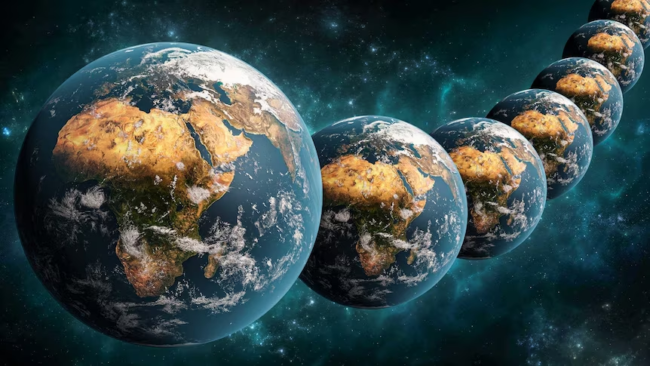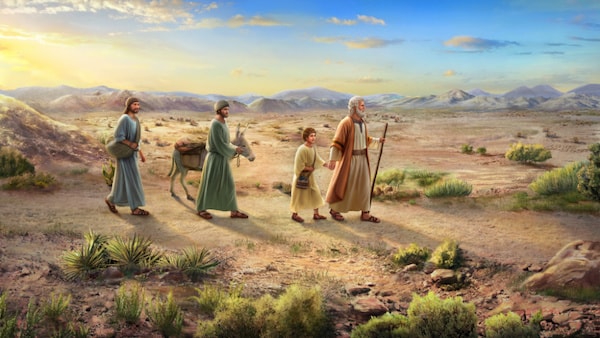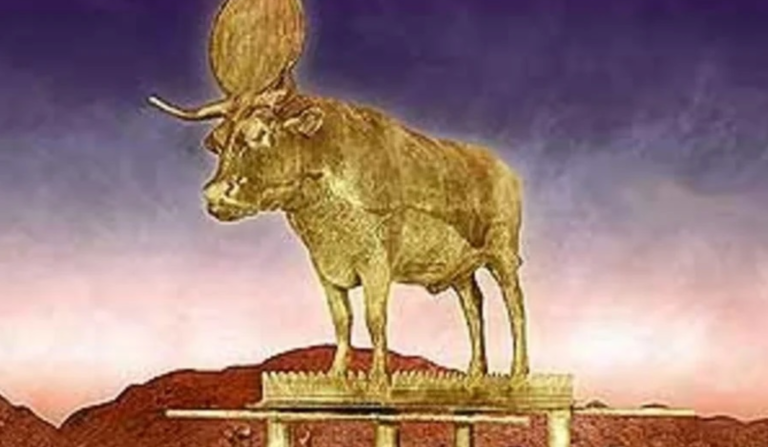Just How Powerful is Your G-d?

A 'Thought Journey' to Expand One's Awe of G-d
In Parashat Beshalach, we read about the splitting of the Yam Suf, a miracle that demonstrated Hashem's powers probably more than any other miracle He ever performed. Granted, most of us have not personally witnessed miracles like that where the laws of nature were completely suspended; nevertheless, Hashem does perform many miracles for us on a regular basis, even today. The problem is that due to our many years in galut, we have a hard time recognizing these miracles for what they are. How come? It is because Hashem now wraps miracles in the guise of nature. These days, Hashem's miracles are more like the ones we read about in Megillat Esther than the ones we read about in Sefer Shemot.
Why did He change His style? It was to preserve our free will. Think about it. Supernatural type miracles are practically impossible to deny. Even the Egyptians couldn't deny that Hashem was intervening in the affairs of man at the splitting of the Yam Suf (Shemot 14:25): אָנוּסָה מִפְּנֵי יִשְׂרָאֵל כִּי יְיָ נִלְחָם לָהֶם בְּמִצְרָיִם (Let us flee from Yisrael because Hashem is fighting for them against Egypt). However, with miracles clothed in nature, it is quite possible to dismiss them. All one needs to say is something like, "That wasn't a miracle. It was just a coincidence." Hashem wants us to have this choice.
The ancient Egyptians lived in a world were miracles were commonplace. Although these miracles came from the side of tumah, they were still miracles. As a result, when they witnessed the first few miracles from the side of kedushah, they weren't particularly impressed. They mocked and laughed at Moshe for performing feats that every schoolchild in Egypt was capable of doing. In a certain way, we might be like the ancient Egyptians. Even if we were to witness supernatural type miracles today, would we tend to dismiss them as highly improbable natural phenomenon or as advanced military technology unknown to us? Perhaps. Sadly, we are the product of our times, and it is very difficult to break away from that.
To help us out, we're going to go on a 'thought journey', but before we begin, think of Hashem's powers. Stop reading for at least 30 seconds, or even a minute if you can do that, and really stretch the limits. Push your imagination as far as you can.
Let's start with a verse that highlights Hashem's capabilities (Tehillim 147:4): מוֹנֶה מִסְפָּר לַכּוֹכָבִים לְכֻלָּם שֵׁמוֹת יִקְרָא (He counts the number of the stars; He gives each its name). To be honest, I'm impressed with someone who can remember a phone number without having to write it down. But a 'Being' who can give names to each and every star and not forget them…now that's impressive. Approximately how many stars are there? We don't really know for sure, but the current estimate is at least 200 billion trillion. That's a 2 followed by 23 zeros. Don't even attempt to come to grips with that, because it's not possible. It's completely beyond our comprehension. All we can say is that it's a lot of stars and a lot of names to remember! And that's just one tiny example of Hashem's powers.
Now let's up the ante. Just how powerful is our G-d?
We are beings that have a certain 'control' over the three dimensions of our world, length, width and height. To illustrate, raise your arm and move it back and forth. It's as simple as that. You had control over those dimensions. But we live in a four dimensional universe, right? There's the extra dimension of time. The problem is that, for the most part, we don't have any control over time. We are, as it were, caught in a river of time and being carried downstream whether we like it or not. With rare exception (see our previous article Four Dimensions, Teshuvah and Time Travel from July 2022), we cannot move freely in time. Time controls us; we don't control time.
Imagine someone who could have full control over the fourth dimension, someone who could move in time just as easily as we can move forward and backward on the street. Such an individual could go back into the past and change a decision that he had previously made. And what would be the result of that? It would mean that the entire 'spacetimeline' of the universe emerging from that point onward would be different from what it was before he went back in time to change his decision. The previous spacetimeline would simply disappear, and it would be as if it never was.
However, who says that we must limit our thinking to only one universe at a time? With five dimensions, we open up the possibility of parallel universes. Building upon our example above, we could imagine someone traveling backward in time to change a vital decision point in his life, but instead of the previous spacetimeline disappearing into oblivion, it would remain. In other words, both spacetimelines would coexist simultaneously, the old one in its own universe and the new one, created after he changed a previous decision, in a new universe. This individual could then travel backward in one universe to the 'fork in the road', the spacetime point where the universes diverged, and from there move into the other universe at will.
Shortcuts would permit travel between parallel universes without the need of traveling back to the fork in the road. In the sixth dimension, these shortcuts would allow for jumping instantaneously from any spacetime point in any of the parallel universes to any other spacetime point in any of the parallel universes. An individual could experience all the pasts, presents and futures of all of the parallel universes simultaneously. The only apparent limitation at this point is that the entire system of parallel universes would have emerged from the same starting point, i.e. from a common beginning.
Eliminating this limitation would be possible if we added another dimension. Seven dimensions would mean that an individual could have infinite versions of himself and could move easily from one universe to another at the blink of an eye, knowing all pasts, presents and futures of all of them simultaneously, but with the additional ability of allowing for parallel universes with completely different and separate beginnings.
Is it even possible to add another dimension? Yes, eight dimensions would mean that the number of pasts, presents, and futures would be infinite, the number of parallel universes themselves would extend to infinity, and all objects in each universe would no longer have any physical existence.
Nine dimensions would allow for each and every one of the infinite number of parallel universes to have its own unique set of natural laws which govern its structures and functions. An infinite number of possibilities for the laws of physics that govern a universe? Don't worry if you can't imagine what an alternative set of laws of physics would be like, because no one can imagine it. And don't worry if you can't imagine what an alternative set of matter would be like, because no one can imagine that either. But just because we can't imagine it, doesn't mean that it's not possible. Where would these infinite number of parallel universes be located? They could all be in the exact same place at the exact same time. In other words, multiple civilizations could co-exist in the 'same place' and the 'same time' without any knowledge of each other.
Ten dimensions would afford infinite powers capable of controlling literally everything in each of these infinite number of universes, past, present and future.
Now, if you've ever had difficulty trying to imagine how Eliyahu ha-Navi can attend every bris of every Jew no matter where or when it's taking place, now you have an inkling of how it's possible. And if you've ever had difficulty with the notion that malachim are here, right next to us, it's just that we normally don't see them, now you have an inkling of how that's possible too.
What we have just described is a layman's view of string theory. Whether this theory accurately describes the reality of Creation is irrelevant. Our point is to help us appreciate the greatness of G-d and His infinite powers. This is important, because sadly, many of us live our lives as if we had a 'hip pocket G-d', a somewhat impotent 'G-d' who's really not that capable of providing for us or taking care of us.
If we can read Parashat Beshalach and still get excited by the greatness of G-d and how He saved us from Pharaoh and his army, this is wonderful. But if we've heard the story so many times that it has lost its thrill, then perhaps what we have tried to lay out in this article can help. If we are having challenges with our health, spouse, children, finances, job, etc., whatever seems insurmountable is not too difficult for Hashem. Let's not put limits on Hashem like our ancestors did (Tehillim 78:41): וַיָּשׁוּבוּ וַיְנַסּוּ אֵל וּקְדוֹשׁ יִשְׂרָאֵל הִתְווּ (Again and again they tested G-d and put limits on the Holy One of Yisrael). There is absolutely nothing that He can't do and nothing that He is not willing to do to help out His beloved ones. Everything He does is for our good—it's just that we have a hard time seeing it sometimes.
Let's ask one more question. What forms the basis of all of those dimensions we have tried to describe? Let's work backwards from three dimensions to find out. If we eliminated just one, let's say height, then we are left with only width and length, i.e. a plane like a square or a circle. A two-dimensional being living there would only be able to move on a flat plane. It would have no knowledge of above or below. Next, if we eliminated width, we would be left with only one dimension, a straight line where movement would be permitted only in the forward and backward directions. But what if we eliminated even that dimension? We would be left with zero dimensions, i.e. a 'point' with no length, width, height or time associated with it. Believe it or not, this is the foundation of everything. A dimension in which there is no body, no movement, no-'thing' at all is the foundation of everything. Yes, nothing is the foundation of everything. This is Hashem, the Absolute Unity of everything, completely without description of any type, completely beyond our comprehension. Any word we may choose to use to 'describe' Him is only a metaphor. He is not a 'Being'; He doesn't even have 'Existence', for these terms only relate to the Creation, not to the Creator. Anything we would want to say of Him would be technically inaccurate. All we can say is, Hashem echad. That's it.
Yet, He created us for a reason, to share in His Eternal Infinite Unity. And to be zocheh to that, we too must learn to become no-'thing'. As we have written many times before, our אני ('I') must become אין ('nothing'). Self-nullification. Bitul. This is the meaning of Moshe's words, referring to himself and his brother Aharon when the people complained to them (Shemot 16:7): וְנַחְנוּ מָה (And what are we?). In other words, 'Don't grumble to us, for we are 'what'? Nothing. And this is the meaning of the seven 'whats' that we mention during the introductory prayers of Shacharit: מָה אָנוּ מֶה חַיֵּינוּ מֶה חַסְדֵּנוּ מַה צִּדְקוֹתֵינוּ מַה יְּשׁוּעָתֵנוּ מַה כֹּחֵנוּ מַה גְּבוּרָתֵנוּ (We are what? Our lives are what? Our kindness is what? Our righteousness is what? Our salvation is what? Our power is what? Our strength is what?). The goal is to get to the level where we can say—and really believe—that we are absolutely nothing, and that we have no life, no kindness, no righteousness, no salvation, no power, and no strength, so that we no longer say or think the words of Devarim 8:17: כֹּחִי וְעֹצֶם יָדִי עָשָׂה לִי אֶת־הַחַיִל הַזֶּה (My strength and the power of my hand has gotten for me all this wealth).
When we can honestly say the words of Moshe and Aharon, "נַחְנוּ מָה" [We are 'what'], we will have arrived at the beginning. The beginning? Yes, because that is where Hashem Himself dwells (Yeshayah 57:15): כִּי כֹה אָמַר רָם וְנִשָּׂא שֹׁכֵן עַד וְקָדוֹשׁ שְׁמוֹ מָרוֹם וְקָדוֹשׁ אֶשְׁכּוֹן וְאֶת־דַּכָּא וּשְׁפַל־רוּחַ לְהַחֲיוֹת רוּחַ שְׁפָלִים וּלְהַחֲיוֹת לֵב נִדְכָּאִים (For thus said the Exalted and Uplifted One, Who dwells forever and holy is His name, I dwell in exaltedness and holiness, but [also] with the crushed and lowly of spirit, reviving the spirit of the lowly and reviving the heart of crushed).






